During my search for traditional plant-based dishes from around the world two themes reappear time and again. Religion and poverty. Both of these have long shaped food cultures towards naturally vegan options. Potaje de Garbanzos is a great example. The comforting stew has its roots in Spain’s rural cuisine, where cheap and easily available ingredients were turned into a nourishing meal. The lack of expensive animal proteins meant that the dish was also suitable for religious fasting periods, which made it a popular staple during Lent. Over time, it reached the kitchens of all economic classes, where it began to transform into countless variations and became a symbol of home-cooked comfort food. It’s the kind of dish many remember fondly as the one their grandmother would prepare on a weekend.
There is another reason why Potaje de Garbanzos has become such a sought-after staple. With its origins in Spain’s peasant cuisine, cooks relied on clever methods to create rich flavours and textures. There are particularly two tricks that make this stew special. While cooking the chickpeas from scratch, vegetables and aromatics like onions, red peppers and bay leaves are added to the water. By the time the chickpeas are tender, the leftover liquid will have turned into a rich vegetable stock. Plus, the cooked veg is used later on as well. Zero waste!
The second trick is a natural way to thicken the stew. First, garlic cloves are sautéd in olive oil to impart their flavour. Afterwards, a slice of bread is toasted in the same oil, soaking up all of that garlicky olive oil goodness. The bread, garlic and cooked veg from the stock are then blended into a sauce that will naturally thicken the stew. Genius!
Complete Protein
The combination of chickpeas and bread turns this dish into a complete protein. But what does that mean?
A complete protein contains all nine essential amino acids that the human body cannot produce on its own and must obtain from the diet. Animal-based foods like meat, fish, eggs and dairy are typically complete proteins. However, many plant-based foods lack one or more essential amino acids, making them incomplete proteins.
Some plant foods, such as quinoa, soybeans (tofu, tempeh, edamame), chia seeds, hemp seeds and buckwheat, are complete proteins on their own. Others, like beans, lentils, nuts and seeds are incomplete but can be combined with other sources to form complete proteins. For example, combining legumes with grains, grains with nuts or nuts with legumes can create a complete protein meal.
Our body can store these amino acids and combine them with those received from sources we consume at other times during the day. So eating a complete protein is not essential for every dish. However, combining different sources of proteins in a single meal makes it easier to cover the daily intake.
Pressure Cooker
Using a pressure cooker is a great way to cook legumes from scratch in a matter of minutes. They will be much more tender compared to being cooked in an ordinary pan and take a friction of the time and energy, sometimes speeding up the process by 70%. Since pressure cookers vary slightly from manufacturer to manufacturer, please refer to the manual for how to use the one you own. For this recipe, I used the Fissler Vitaquick Premium 4.5l.
It takes about 10 minutes to come to a boil and reach the full pressure and a further 15 minutes until the chickpeas are perfectly cooked. So after just 25 minutes your chickpeas are ready and you can release the pressure. If you do use a pressure cooker for this recipe, you can deduct 45 minutes of the total cooking time.
Tip: To save even more energy, you can also cook the chickpeas for only 8 minutes and let the cooker cool off entirely before opening it, thereby allowing it to slowly release the pressure by itself. This can take around 1 hour and is best done ahead.
Serves 4
Ingredients
- 320g dried chickpeas (or 2 x 660g jars or 4 x 400g cans, see note below)
- 2 large onions (400g)
- 1 red pepper
- 1 bay leaf
- 6 tbsp extra virgin olive oil
- 6 garlic cloves
- 1 large slice of bread (60g, I used sourdough)
- 2 medium potatoes (250g)
- 2 large tomatoes (300g)
- 300g large leaf spinach
- 1 1/2 tsp pimentón de la vera dulce (sweet smoked paprika)
- 1/2 tsp freshly ground black pepper
- 1 1/2 tbsp salt (21g)
Method
Soak the chickpeas in at least 1.5l of water overnight.
The next day, peel and half one of the onions and deseed the red pepper. Drain the chickpeas and add them to a large saucepan along with 1.5l of water as well as the halved onion, red pepper and bay leaf. Bring to a boil, then simmer with a lid left ajar (or covered if the pan is large enough) for 1 hour or until the chickpeas are just tender. Then simply turn off the heat and leave to cool. Alternatively, cook with 1l of water for around 15 minutes in a pressure cooker (saves 45 minutes of the total time).
When the chickpeas have around 10 mins left, heat 3 tablespoons of the olive oil over medium heat in a large casserole. Peel the garlic and sauté them until golden (3-4 minutes), then transfer to the jug of a large blender. Now toast the bread in the residue oil until golden on both sides (3-4 minutes), chop it into chunks and add to the blender jug as well.
Discard the bay leaf from the chickpeas and transfer the cooked onion and pepper to the same jug from above. Add 300ml of water and blend into a thick paste. Drain the chickpeas, but keep the cooking water for later.
Heat the remaining 3 tablespoons of oil over medium heat in the casserole. Peel and roughly chop the onion and sauté in the oil until it begins to turn golden (8-10 minutes). Meanwhile, cut the potatoes into bite-sized chunks, roughly chop the spinach, grate the tomatoes and discard the skins (or eat as a snack with olive oil and salt), setting everything aside in separate bowls.
Add the grated tomatoes to the casserole with the onions and cook until the juices have evaporated. Stir in the paprika and pepper and, once aromatic, pour in the drained chickpeas, 400ml of the reserved cooking liquid, the blended paste, potatoes and salt. Return to a boil, then reduce the heat and simmer covered for 15 minutes, stirring halfway through to avoid it sticking to the bottom.
Fold in the spinach and cook for another 5 minutes or until the potatoes are tender. Divide over bowls and serve with a drizzle of extra-virgin olive oil.
Notes
If using jarred or canned chickpeas, simply cut the red pepper and onion into chunks and sauté in a little oil until softened (8-10 minutes), then add them to the blender jug and proceed with Step 4 to blend the paste. Drain the chickpeas and follow the rest of the recipe, adding 400ml of fresh water instead of the cooking liquid when you add the chickpeas.
As an Amazon Associate I receive a small commission from affiliate links on this page.
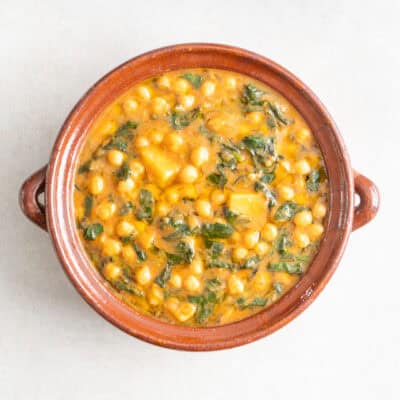
Potaje de Garbanzos (Spanish Chickpea, Potato & Spinach Stew)
Ingredients
- 320 g dried chickpeas (or 2 x 660g jars or 4 x 400g cans, see note below)
- 2 large onions (400g)
- 1 red pepper
- 1 bay leaf
- 6 tbsp extra virgin olive oil
- 6 garlic cloves
- 1 large slice of bread (60g, I used sourdough)
- 2 medium potatoes (250g)
- 2 large tomatoes (300g)
- 300 g large leaf spinach
- 1 1/2 tsp pimentón de la vera dulce (sweet smoked paprika)
- 1/2 tsp freshly ground black pepper
- 1 1/2 tbsp salt (21g)
Instructions
- Soak the chickpeas in at least 1.5l of water overnight.
- The next day, peel and half one of the onions and deseed the red pepper. Drain the chickpeas and add them to a large saucepan along with 1.5l of water as well as the halved onion, red pepper and bay leaf. Bring to a boil, then simmer with a lid left ajar (or covered if the pan is large enough) for 1 hour or until the chickpeas are just tender. Then simply turn off the heat and leave to cool. Alternatively, cook with 1l of water for around 15 minutes in a pressure cooker (saves 45 minutes of the total time).
- When the chickpeas have around 10 mins left, heat 3 tablespoons of the olive oil over medium heat in a large casserole. Peel the garlic and sauté them until golden (3-4 minutes), then transfer to the jug of a large blender. Now toast the bread in the residue oil until golden on both sides (3-4 minutes), chop it into chunks and add to the blender jug as well.
- Discard the bay leaf from the chickpeas and transfer the cooked onion and pepper to the same jug from above. Add 300ml of water and blend into a thick paste. Drain the chickpeas, but keep the cooking water for later.
- Heat the remaining 3 tablespoons of oil over medium heat in the casserole. Peel and roughly chop the onion and sauté in the oil until it begins to turn golden (8-10 minutes). Meanwhile, cut the potatoes into bite-sized chunks, roughly chop the spinach, grate the tomatoes and discard the skins (or eat as a snack with olive oil and salt), setting everything aside in separate bowls.
- Add the grated tomatoes to the casserole with the onions and cook until the juices have evaporated. Stir in the paprika and pepper and, once aromatic, pour in the drained chickpeas, 400ml of the reserved cooking liquid, the blended paste, potatoes and salt. Return to a boil, then reduce the heat and simmer covered for 15 minutes, stirring halfway through to avoid it sticking to the bottom.
- Fold in the spinach and cook for another 5 minutes or until the potatoes are tender. Divide over bowls and serve with a drizzle of extra-virgin olive oil.
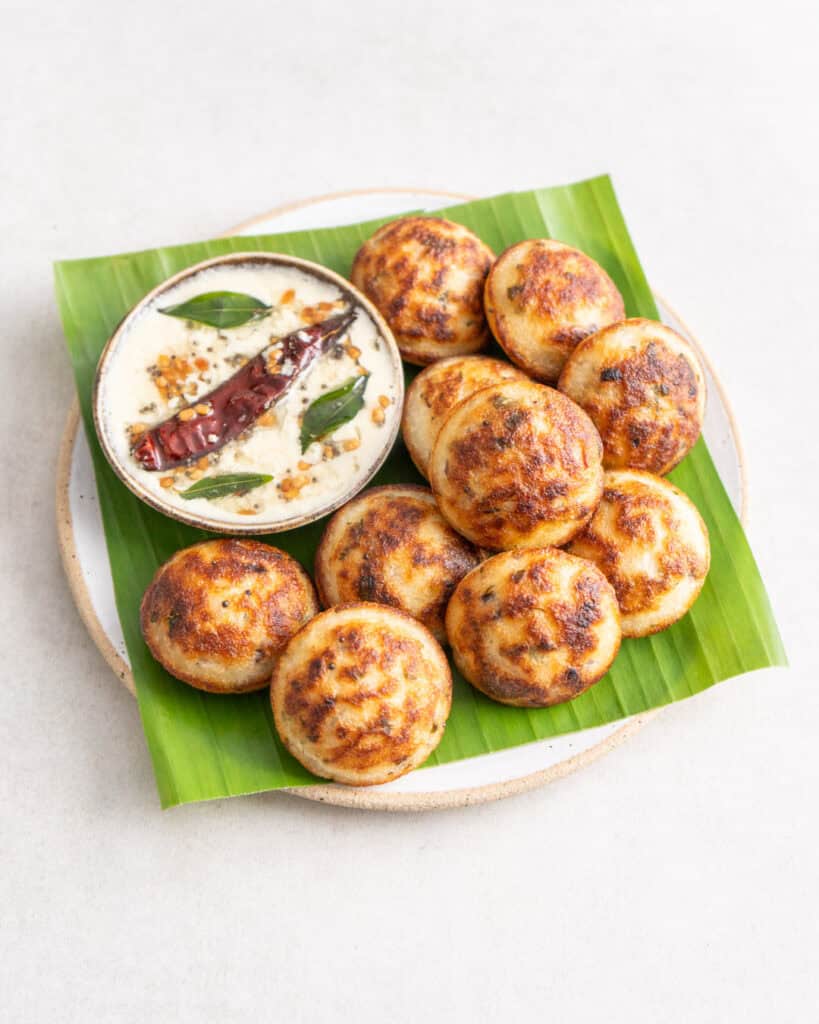
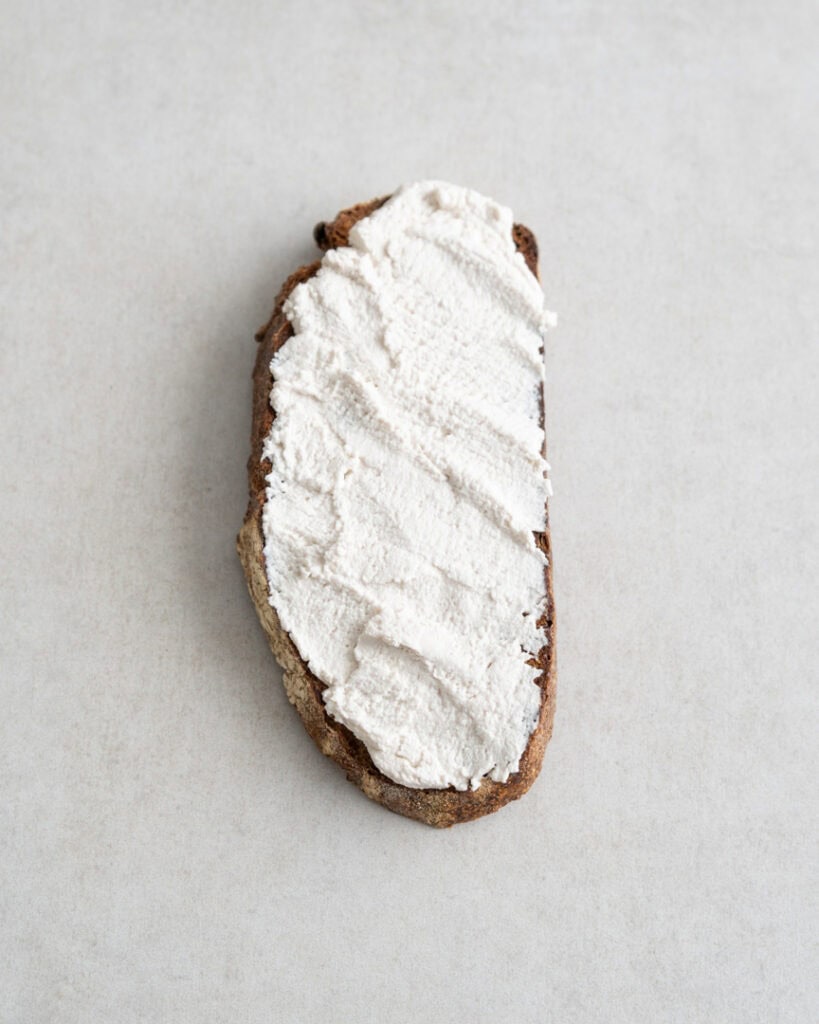
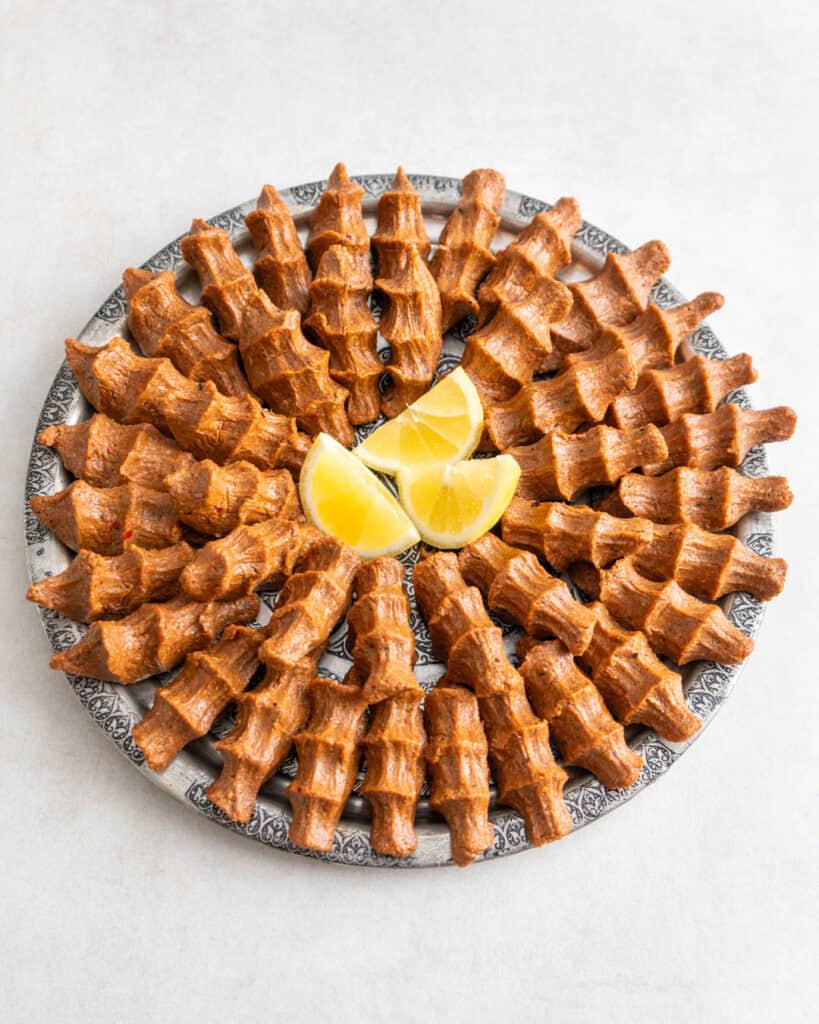
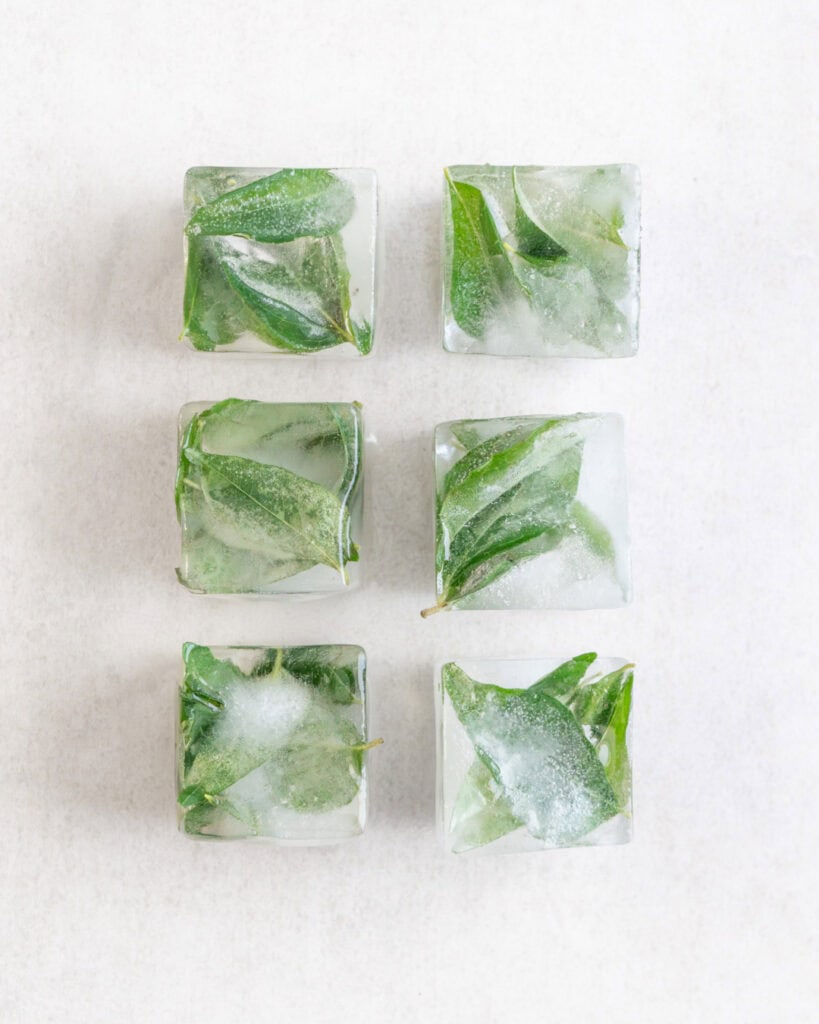
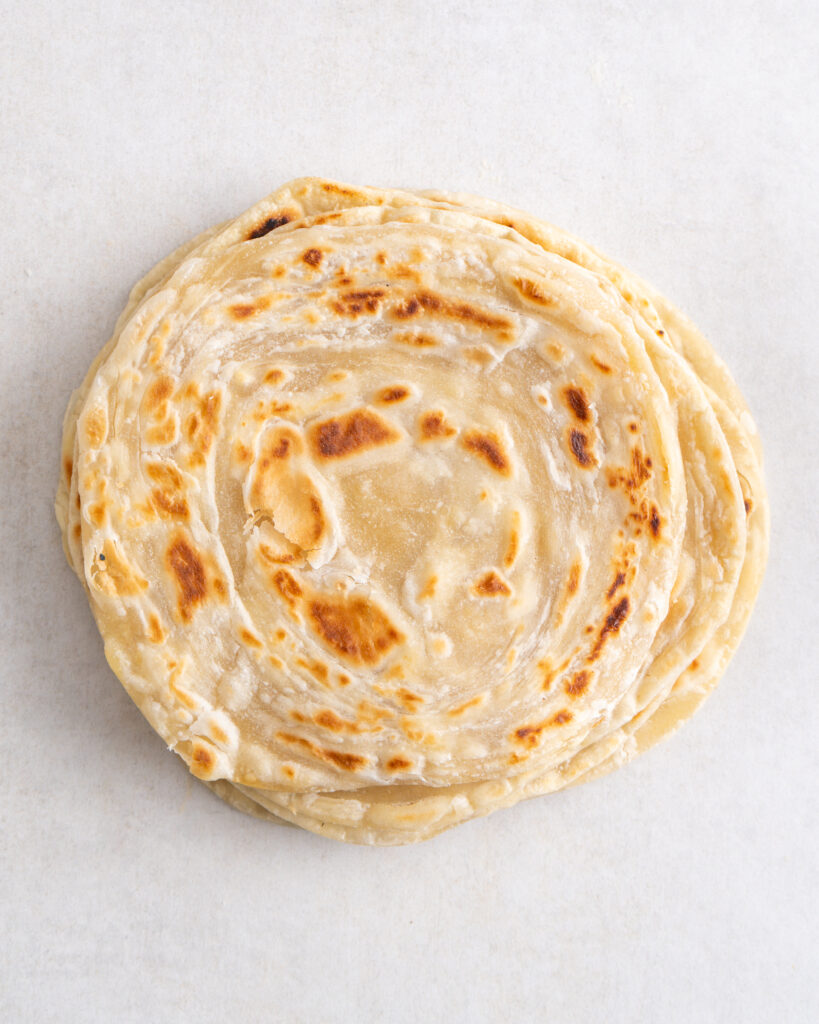
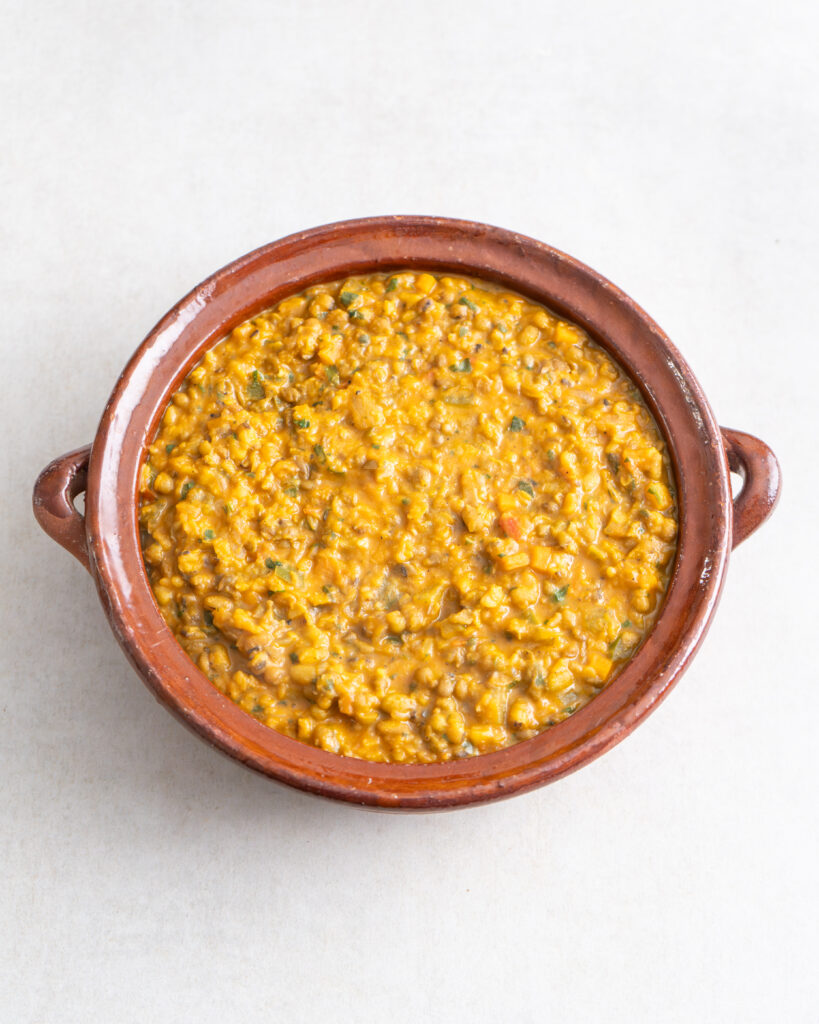
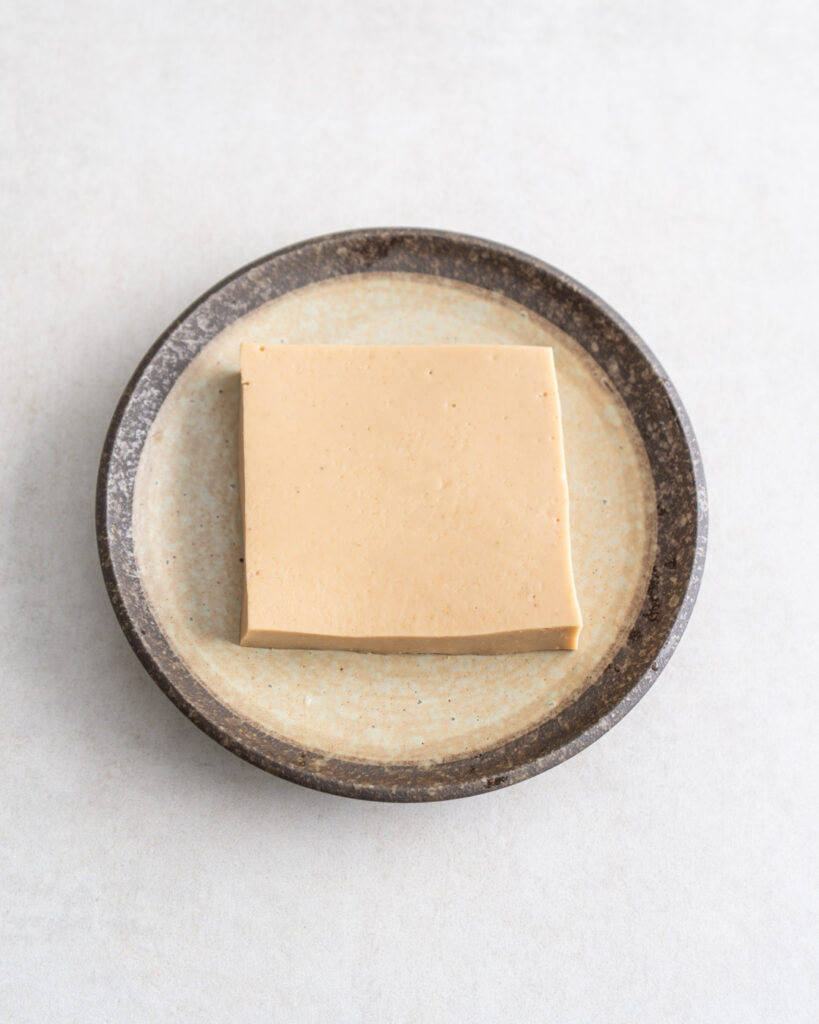
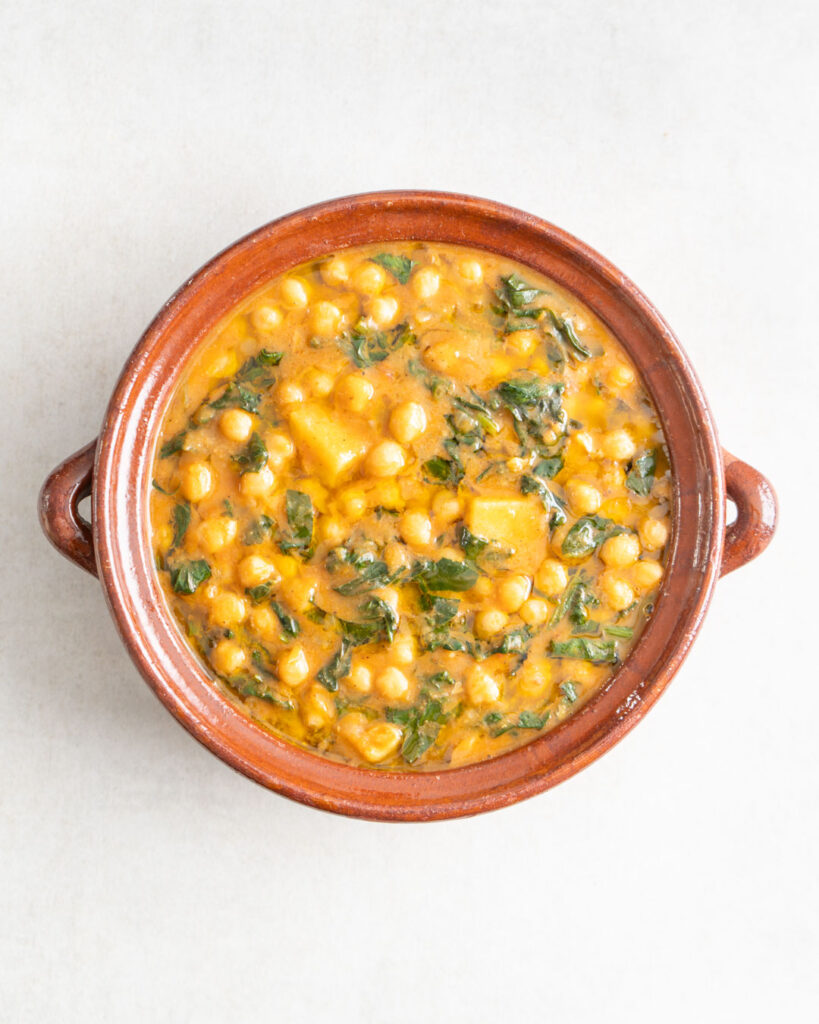
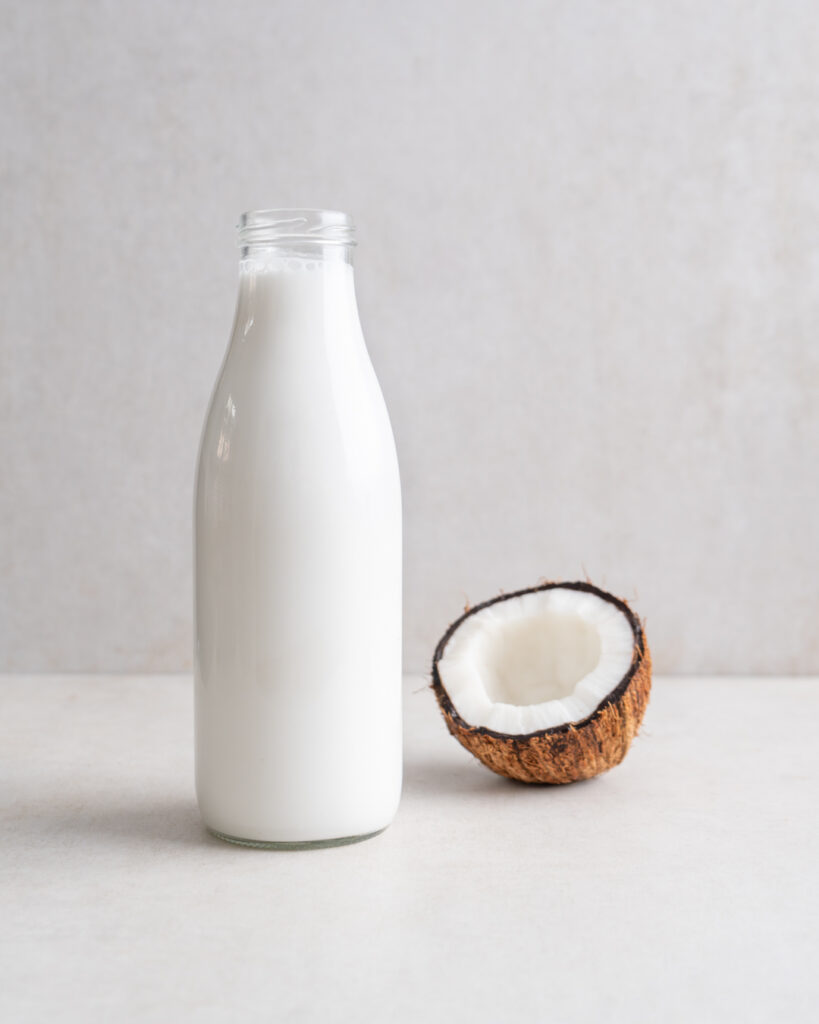
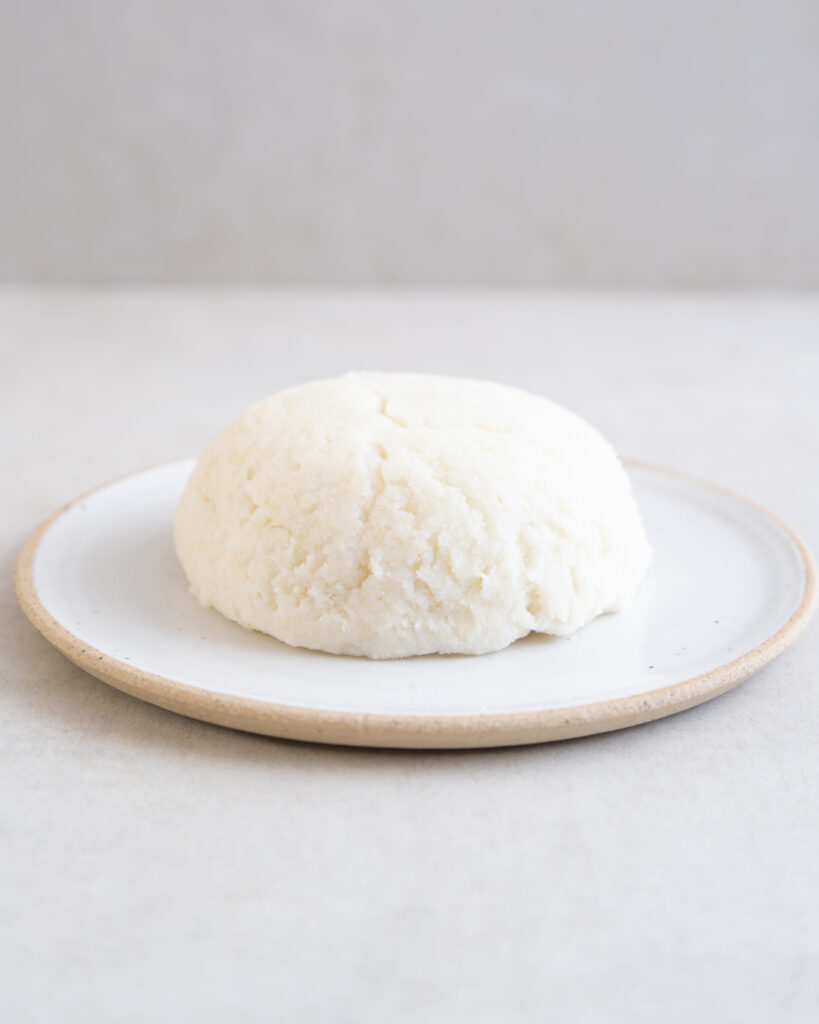
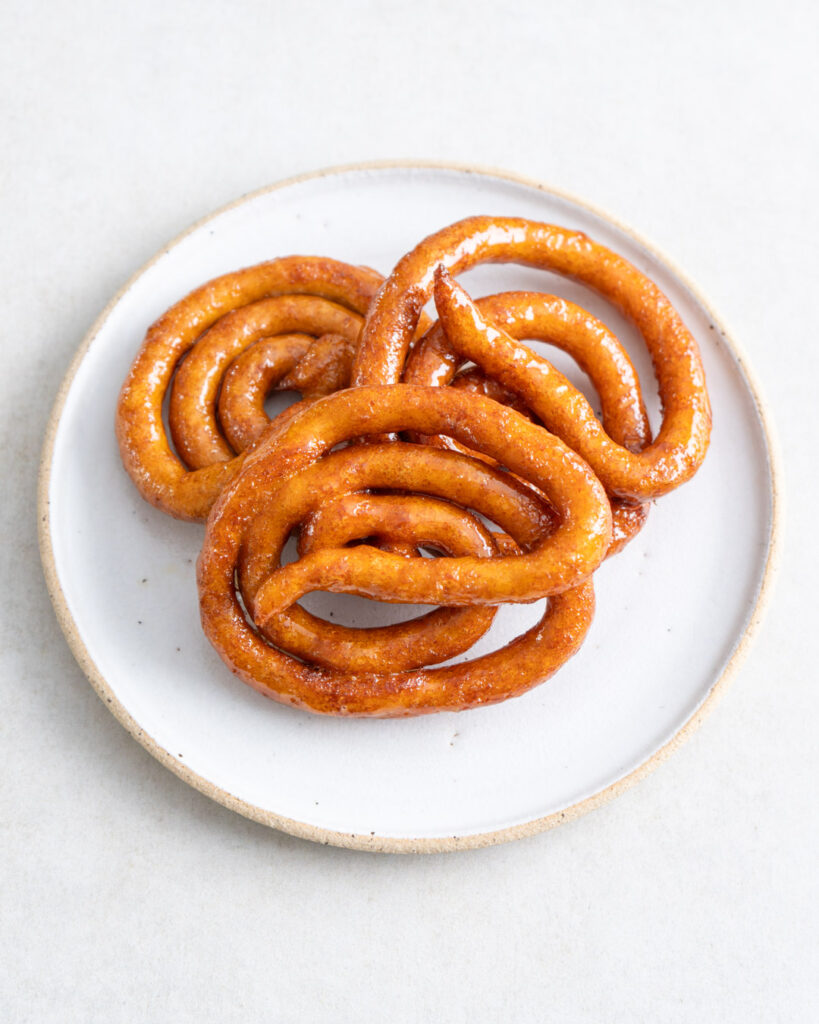
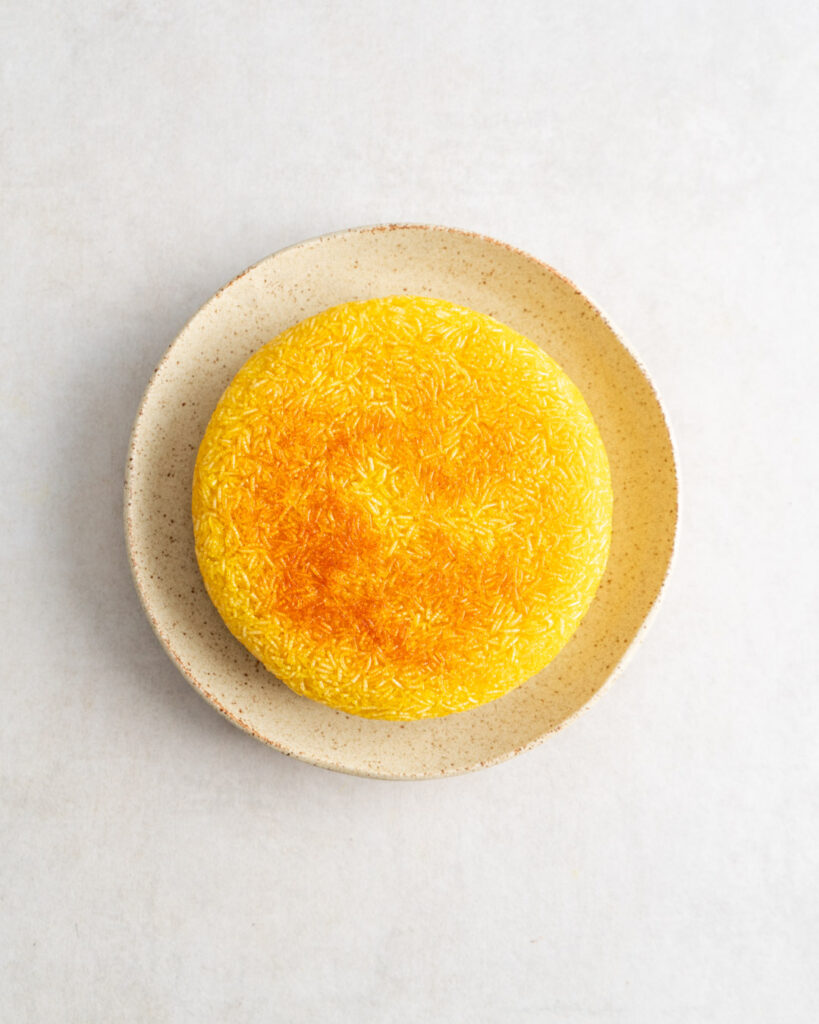
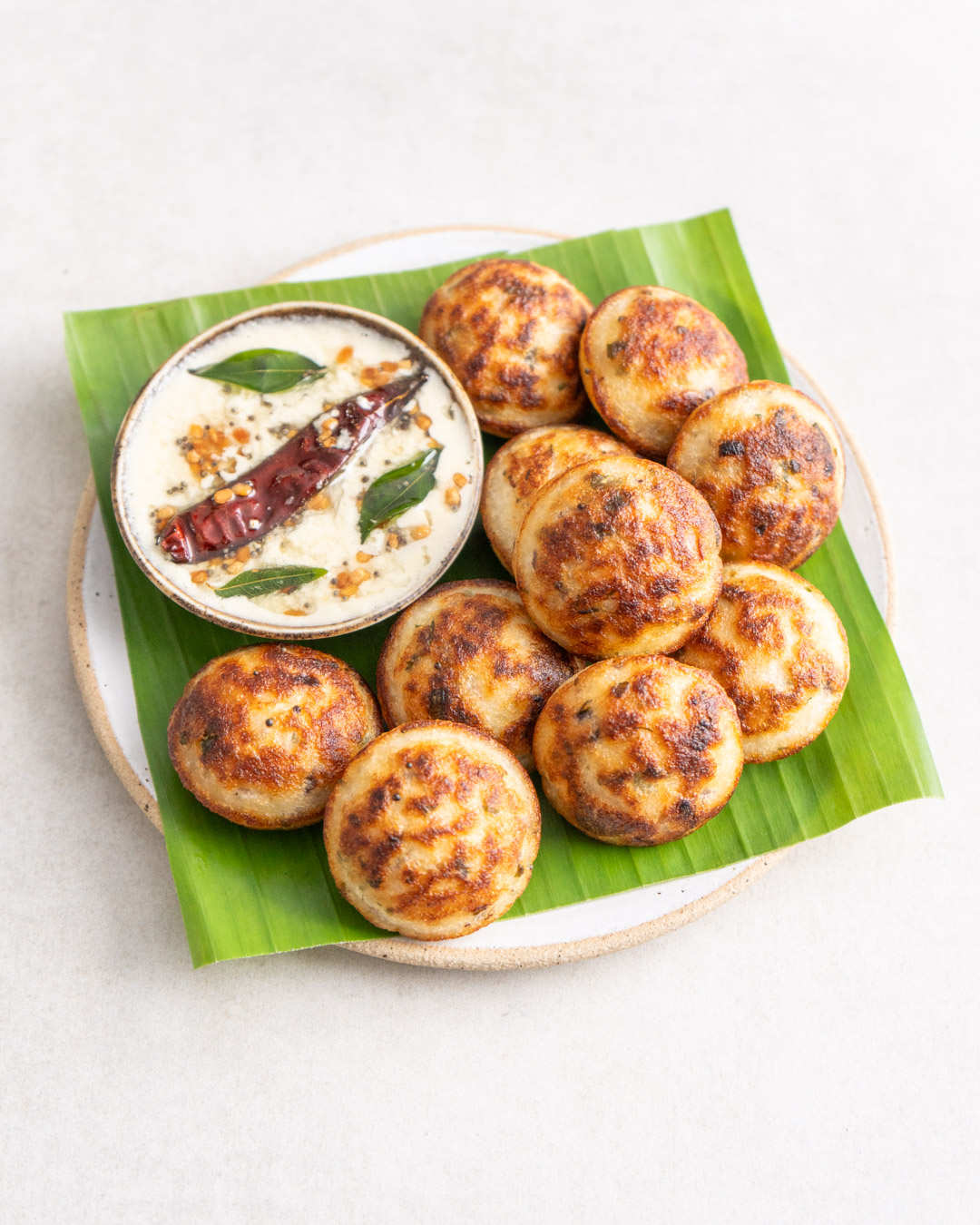
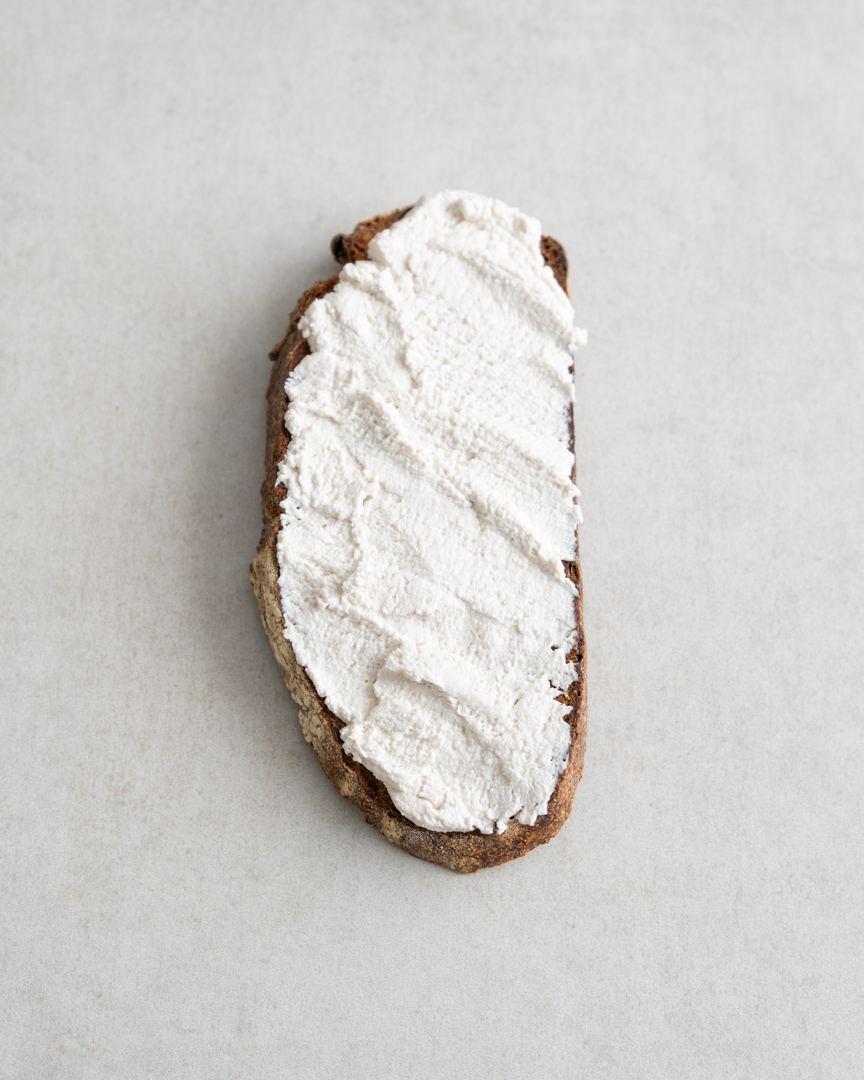
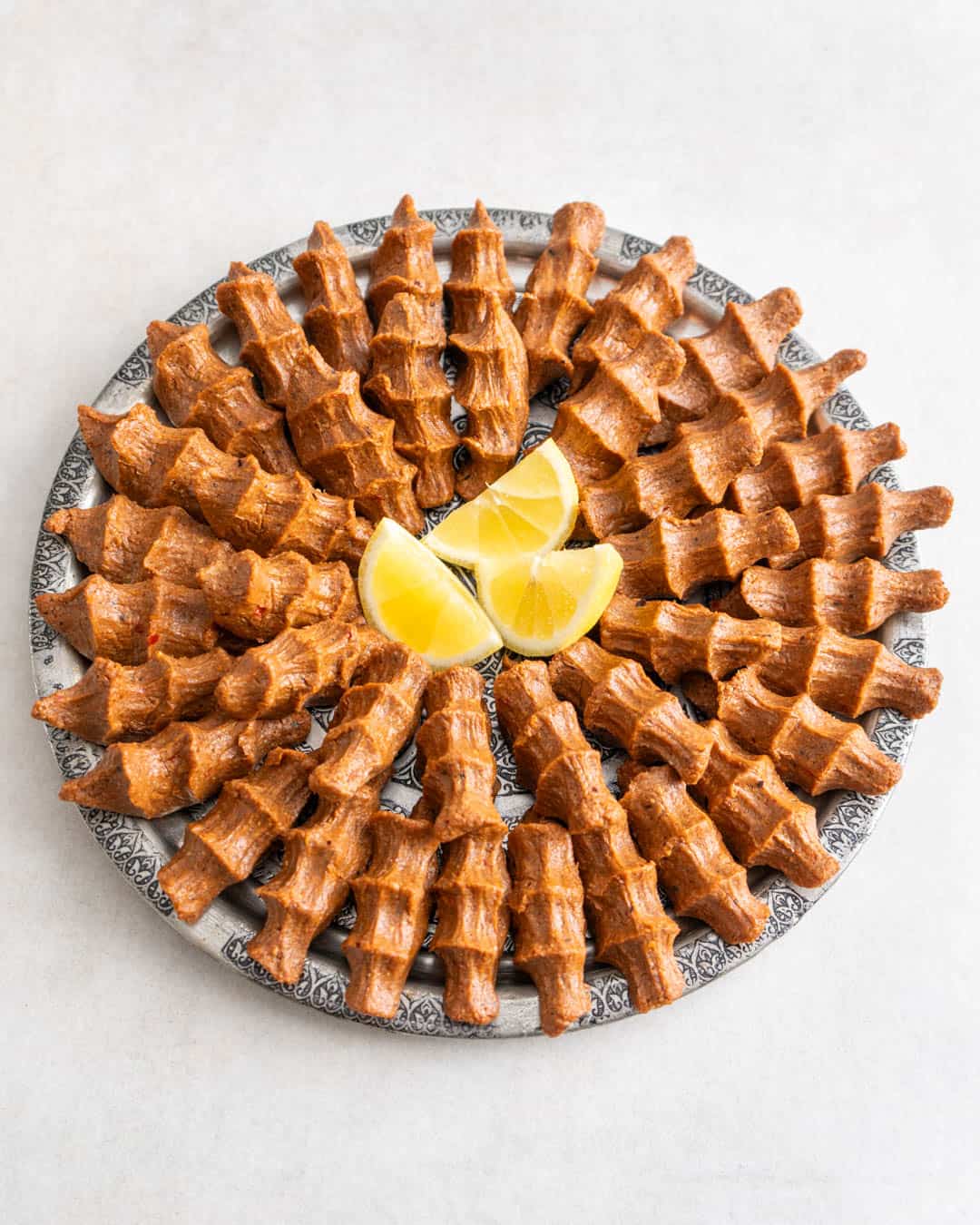
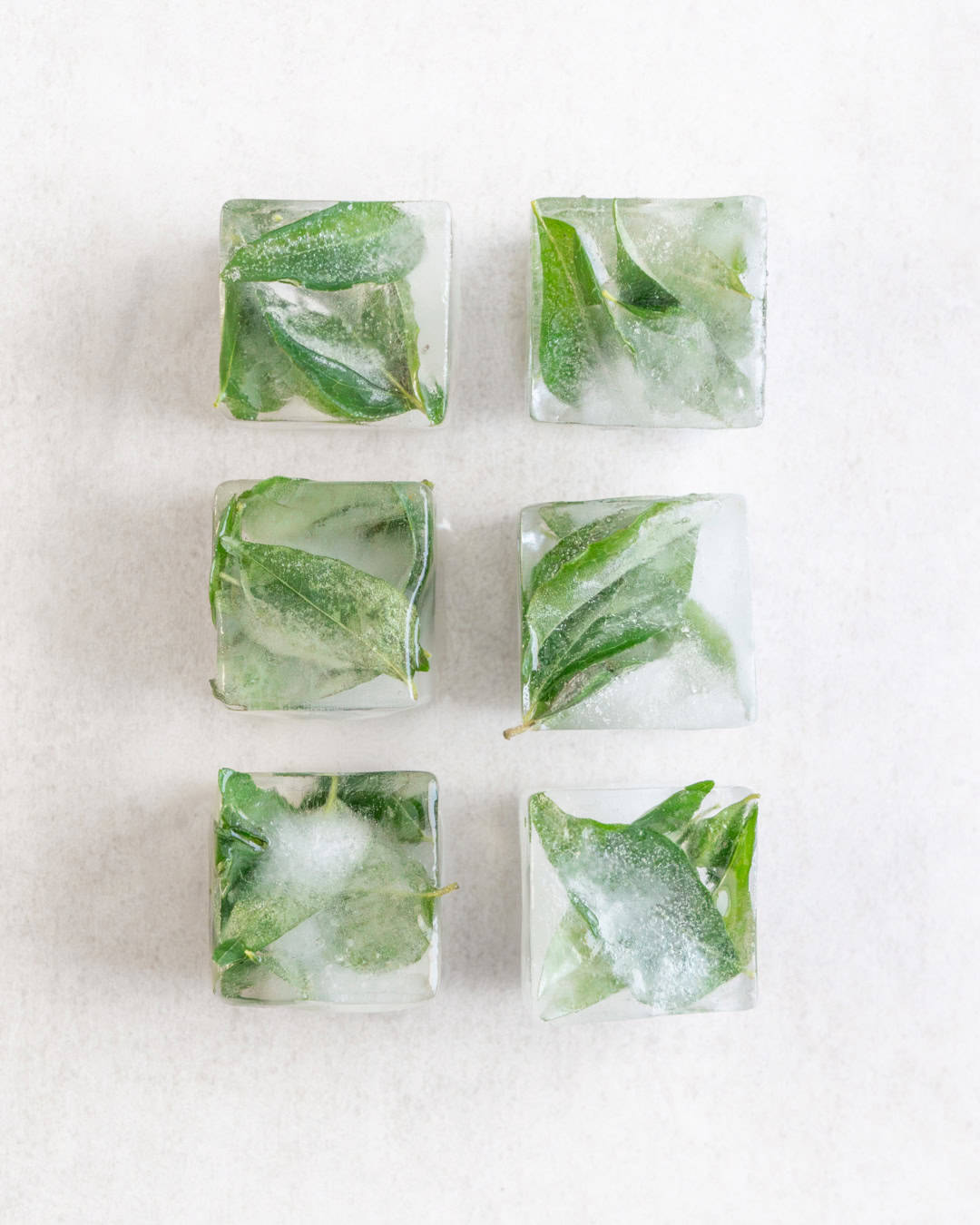
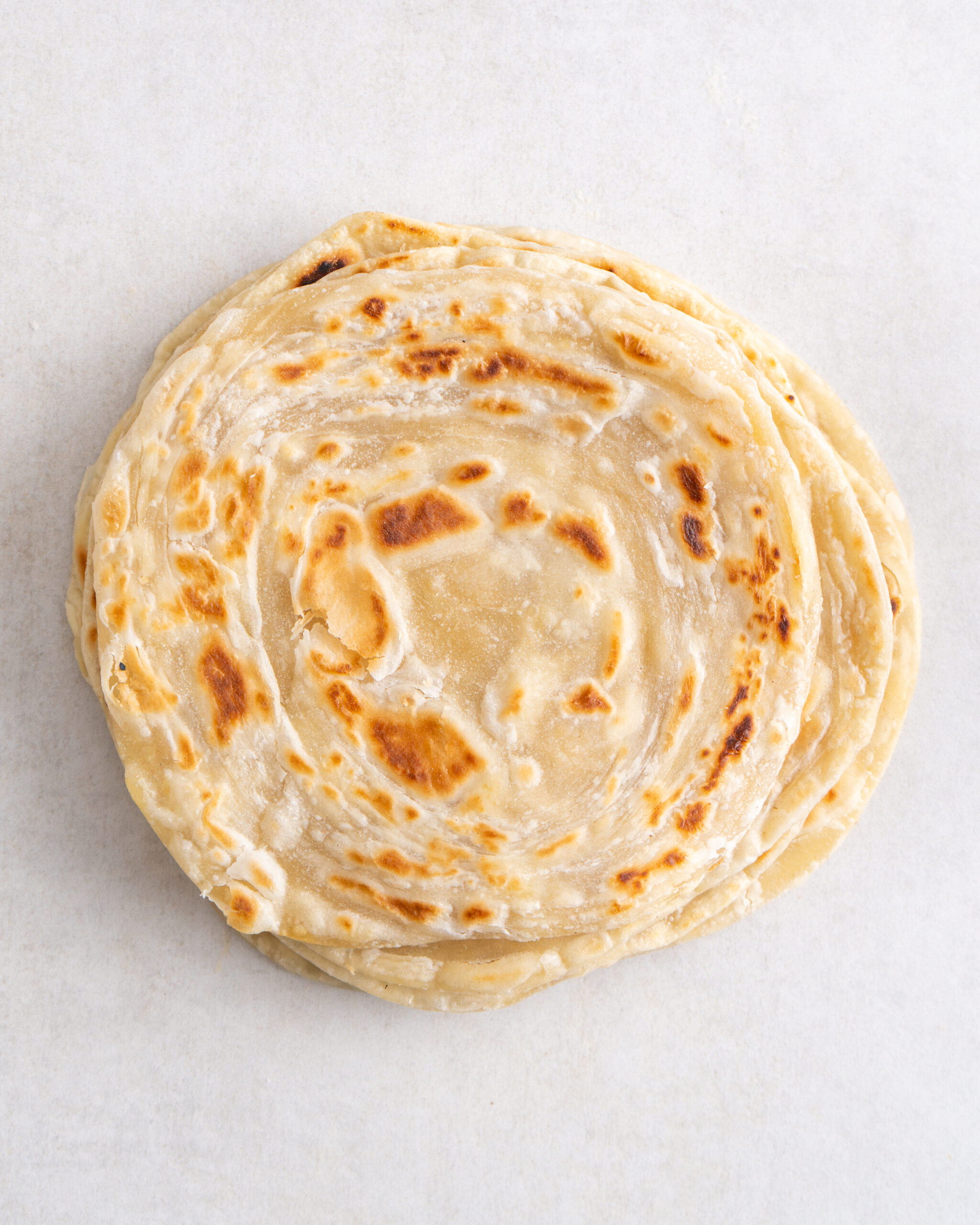
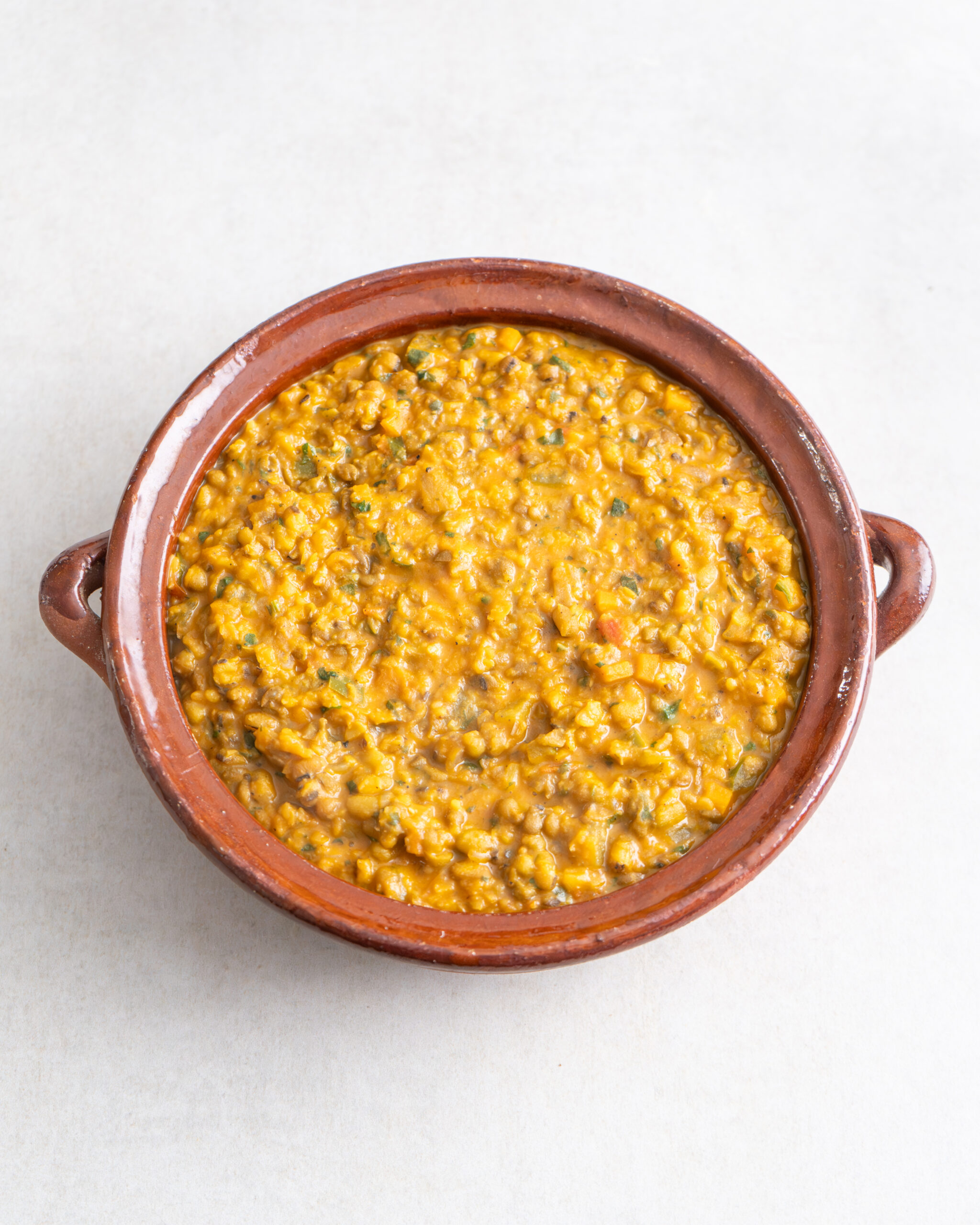
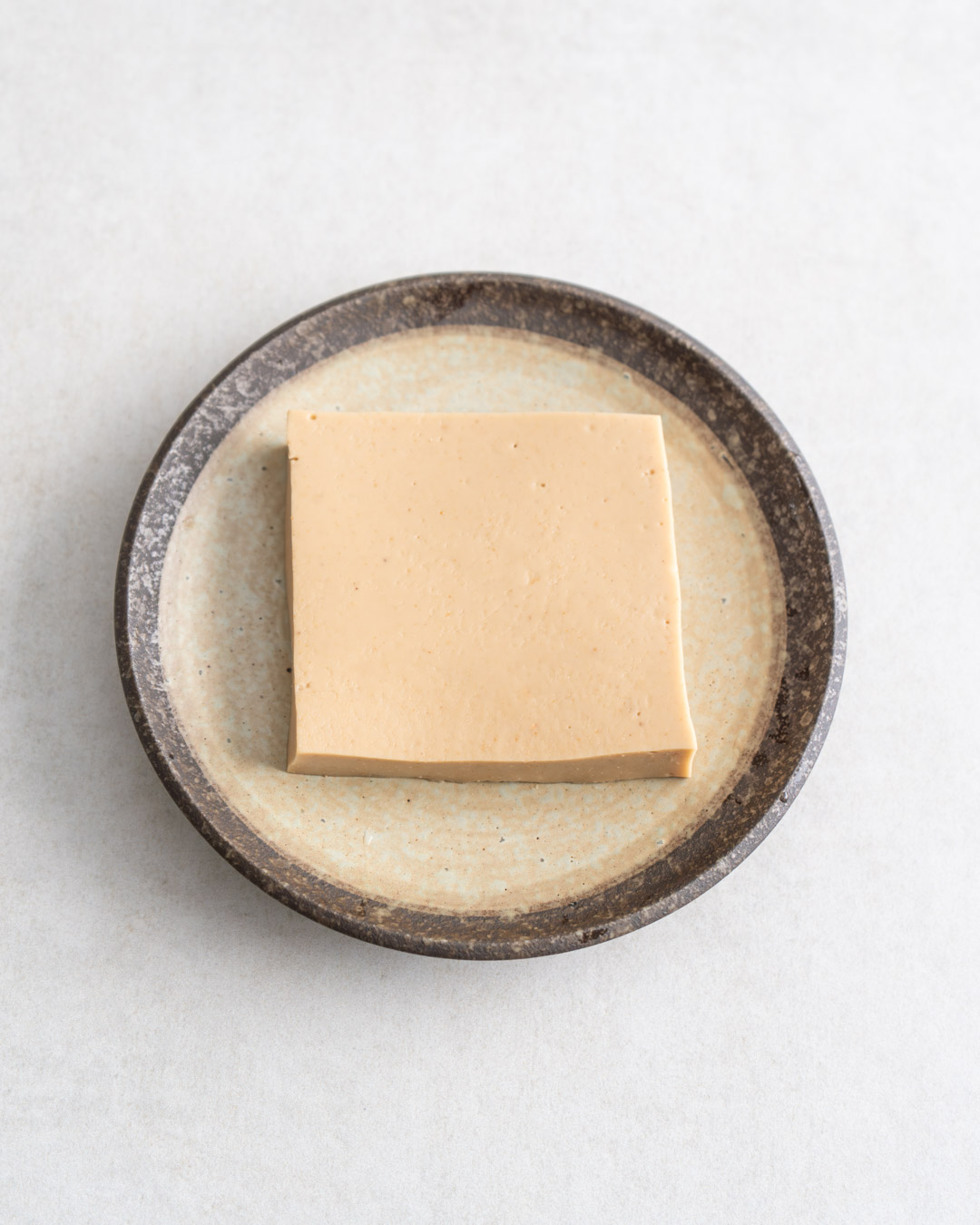
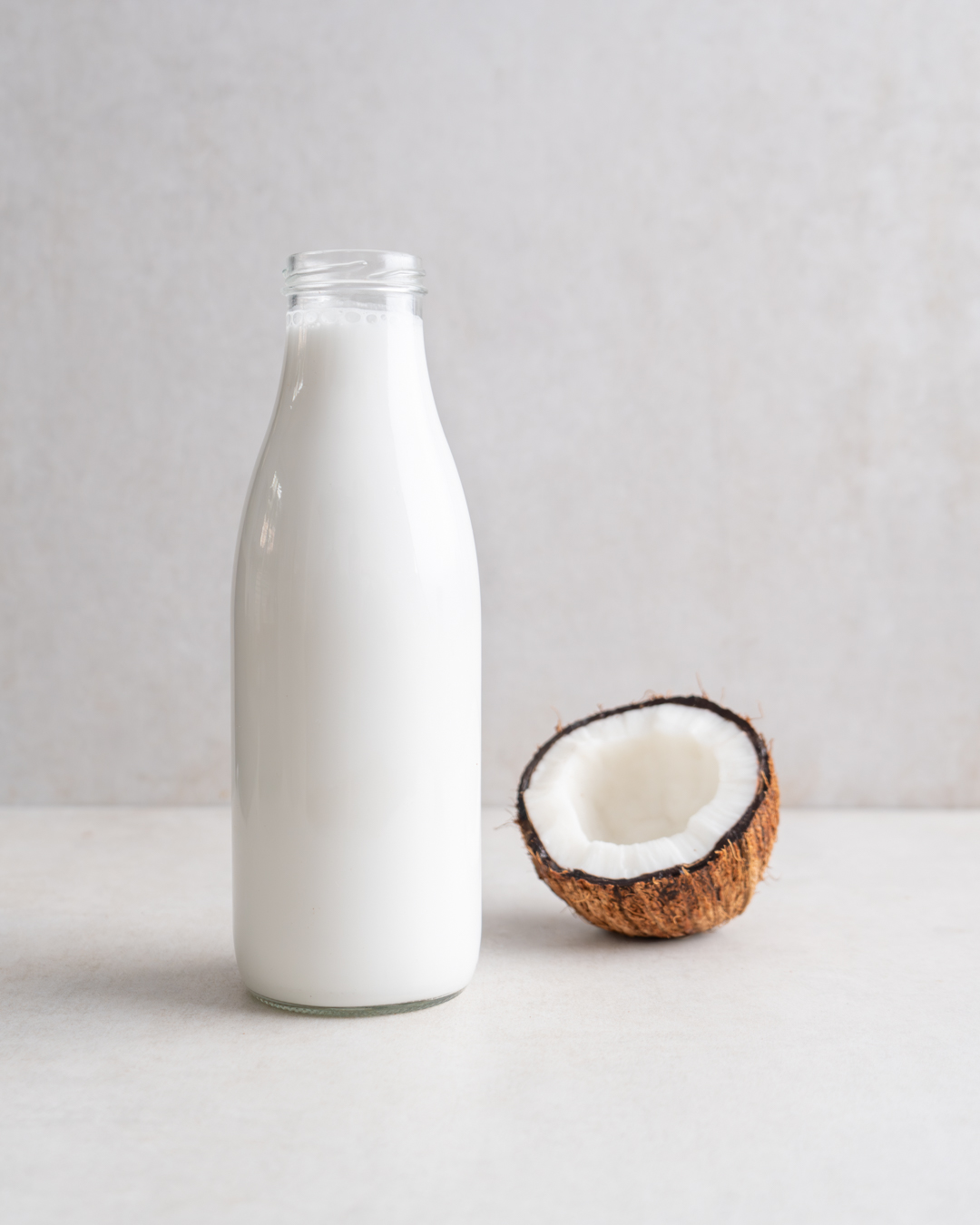
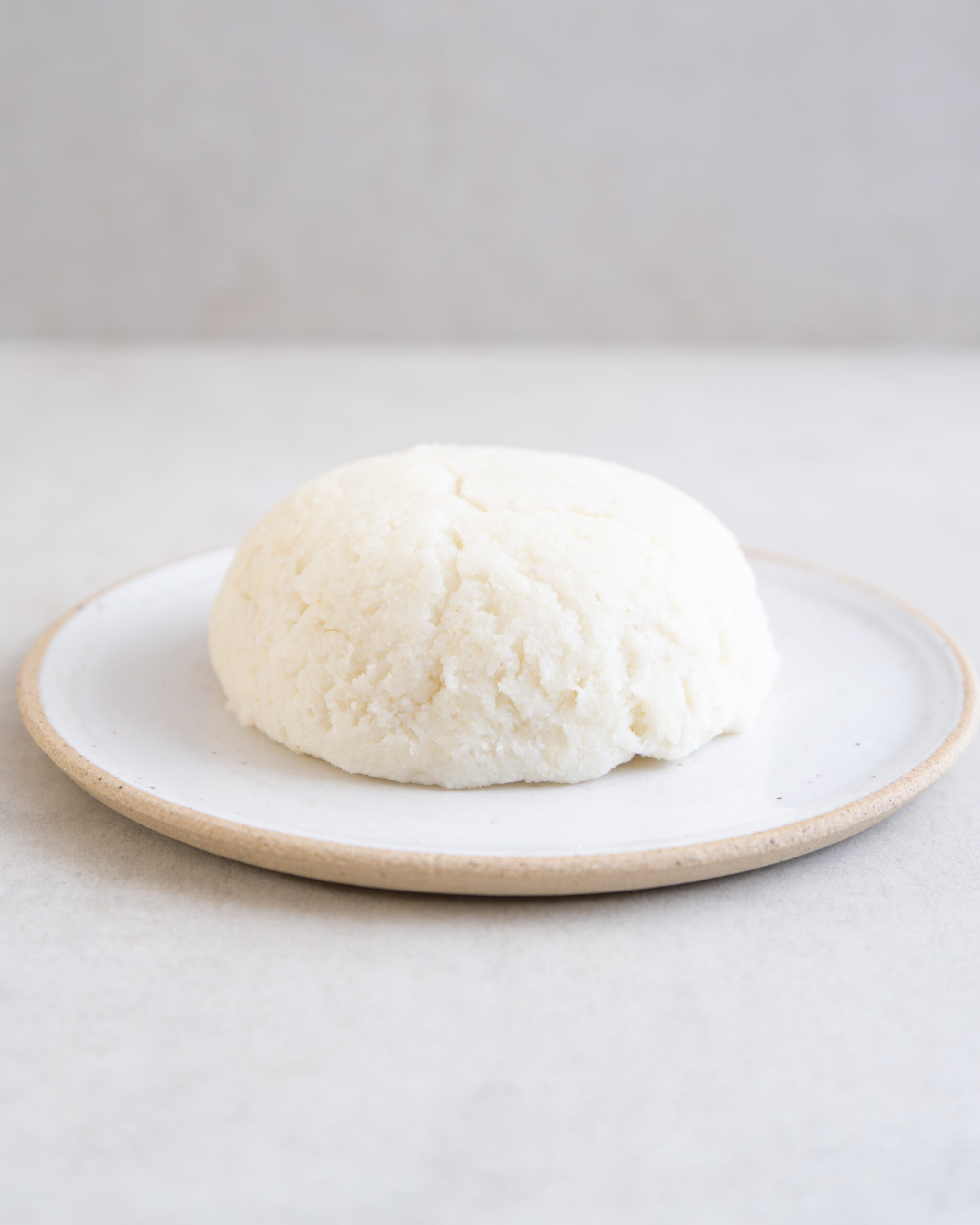
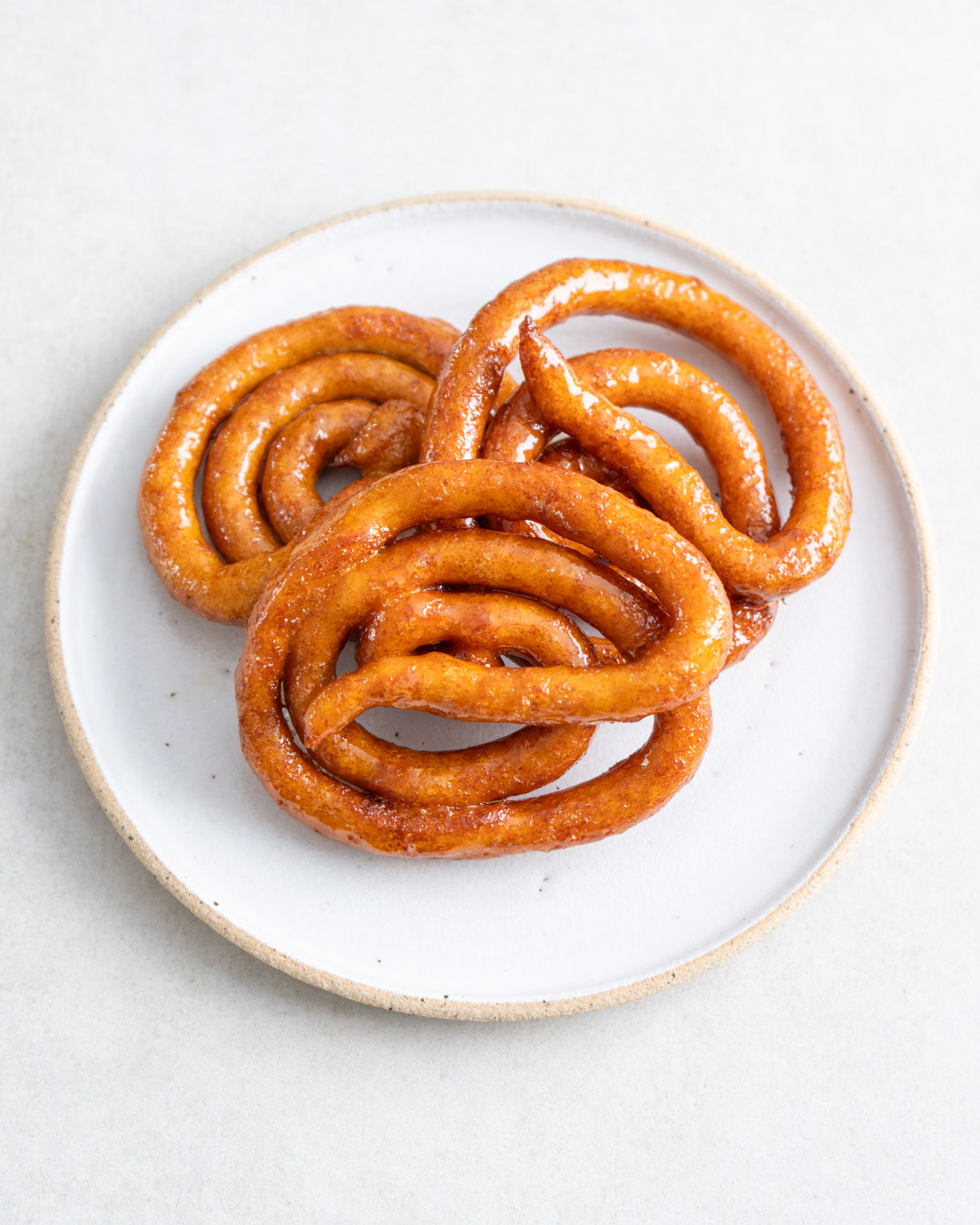
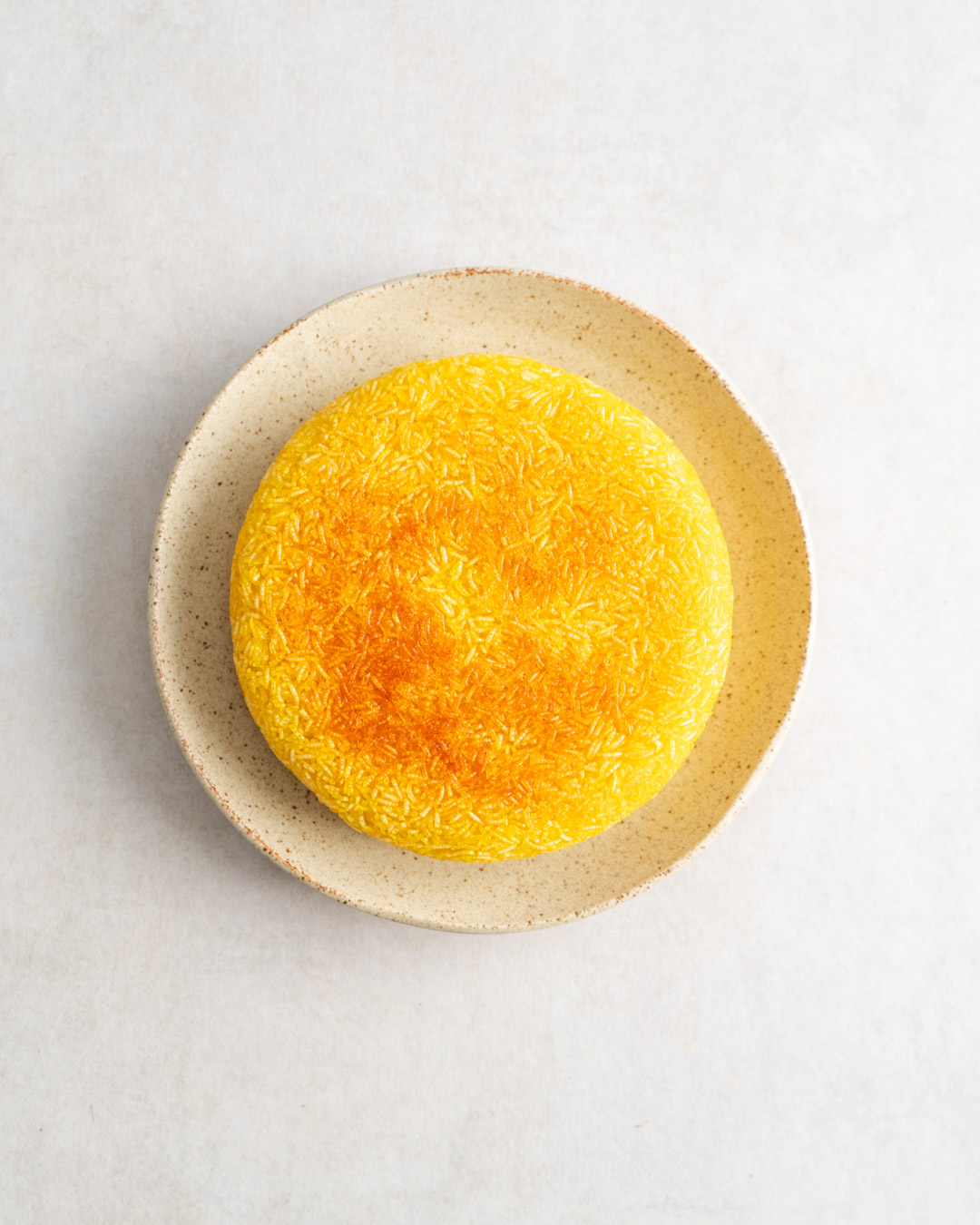
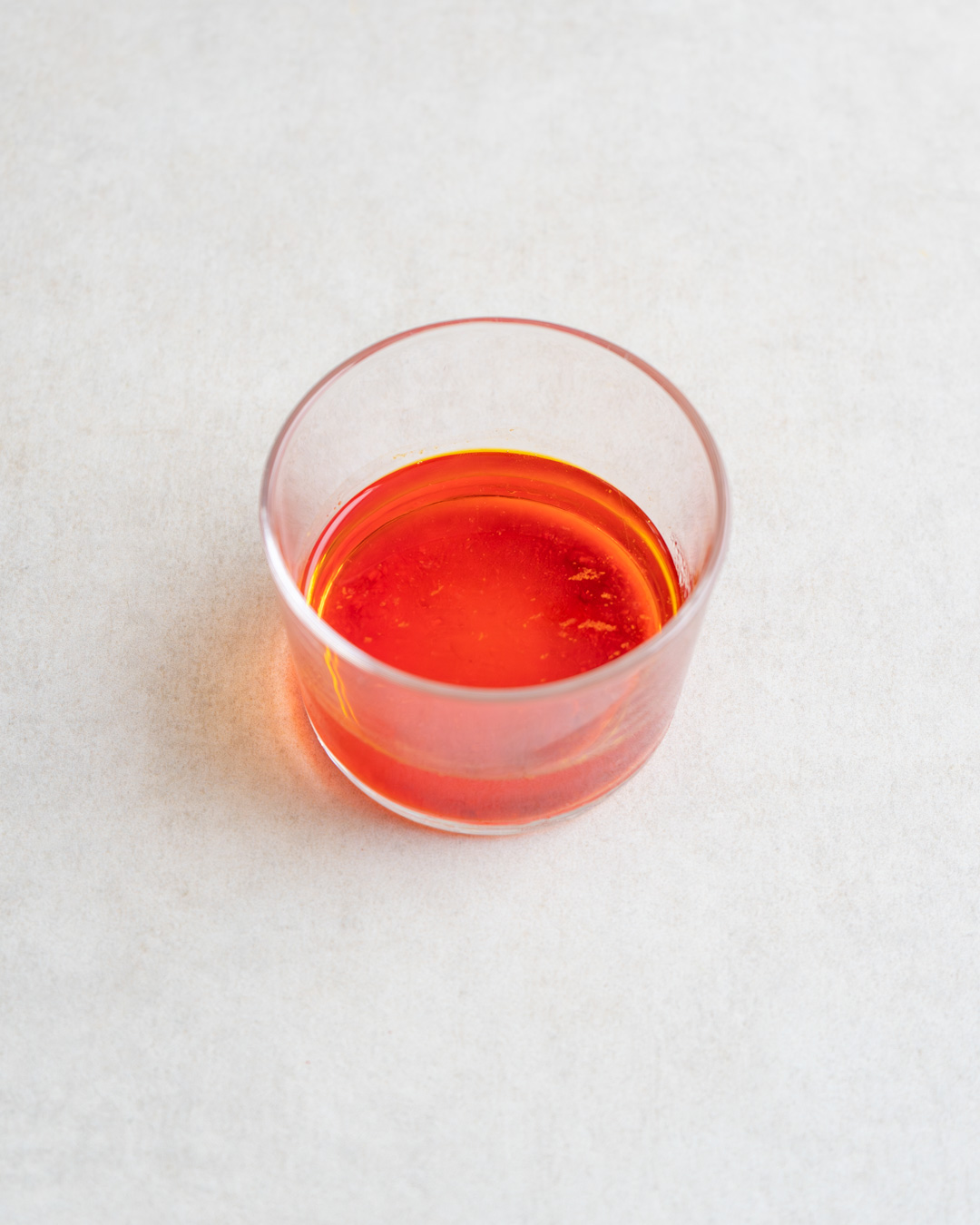
Great flavours, super comforting with a slice of sourdough on the side. Next time I will parboil the potatoes before adding them, and add a dash of sugar to offset the acidity of the tomatoes. Apart from that, a keeper. Will definitely make again, thanks 😊
Wonderful! Thanks for the feedback as well ☺️
Hello, is regular smoked paprika different from the one you recommend here?
You can use regular smoked paprika. ☺️ In Spain it’s just called pimentón de la vera dulce.
Delicious, fantastic thick and tasty stew. I don’t have a blender but it still turned out yummy 🙏💚
Wonderful! The blender is only a little hack to speed things up. Traditionally, a pestle & mortar would be used. But whichever method you choose, it’s just a way to break down the bread and thicken the stew naturally. Glad you liked it!
One of my favourite recipes that I make almost weekly now! So rich in flavour and comforting. Thank you so much for sharing. 🙂
One of my favourite recipes that I make almost weekly now! So rich in flavour and comforting. Thank you so much for sharing. 🙂
That’s wonderful to hear! Absolutely, it’s the ultimate comfort food!